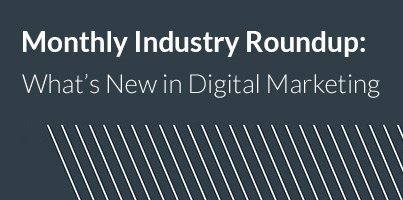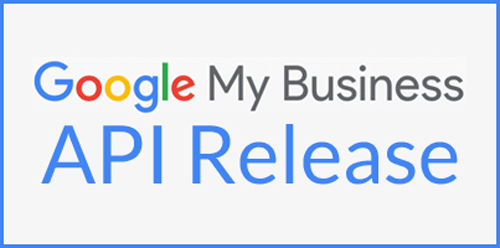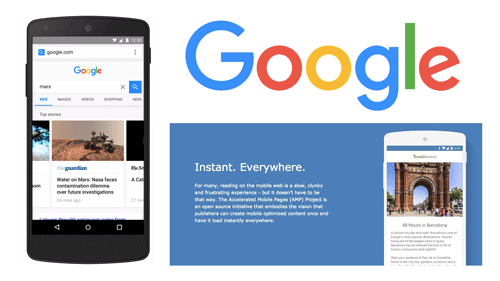Monthly Industry Roundup: December 2015

Location3 Media News: Happy New Year from everyone here at Location3! But first, a quick look back at December 2015:
Google made a huge announcement in the world of local listings management with the release of version 2 of Google My Business API. Location3 is fully integrated into the Google API and is actively using it to monitor updates and changes on behalf of our clients.
Taking a look back, it was the year of mobile, and Robin Arlen, head of display, took a look at the best new strategies inDigi 2015. And looking forward, Location3 President Alex Porter shared his insight on attribution strategy and goals for 2016 in episode 19 of our podcast, Digital Shoptalk.
We’re excited to build on the momentum of 2015 and push forward with rising expectations and advancing innovation in 2016.
WHAT’S HAPPENING IN SEARCH?
New Feature in Google Analytics Offers Alternative Metric
A new feature to GA, Smart Goals, can integrate with AdWords campaigns to offer an alternative KPI to the conversion advertisers already track. Smart Goals distill many attributes surrounding a particular site visit to gauge whether it shares commonalities with those of visits resulting in a conversion. By adding this campaign tracking through GA, marketers can begin assigning a quality metric to clicks driven through any channel. In AdWords, combined with QS, this will be very interesting metric in drawing correlations to improved performance. Refer to the Analytics section of this post for a more detailed breakdown.
WHAT’S HAPPENING IN DISPLAY?
Humans Take Over Online Traffic

Finally, we have some good news when it comes to bot traffic! Human traffic now accounts for 52% of all online traffic, overtaking the amount of traffic from bots. While bot traffic is still an issue, and the variety and technology behind bots changes every day, it is something the industry is getting ahead of and a big step forward. More details here.
WHAT’S HAPPENING IN CONTENT + CREATIVE?
Readability Tests Help Content Reach the Right Audience
How readable is your content? Turns out this isn’t a subjective question. The Flesch-Kincaid readability and grade level tests provide a scientific analysis of how “readable” your content is and the corresponding grade level. We all know shorter sentences and shorter words work better in digital copy, but consider digging deeper to discover what level your audience enjoys reading. A medical device company may need to provide materials at a higher grade level in order to seem credible, while a public education initiative may need to write everything at a third grade level to ensure everyone in the target audience can understand the message. Read more about these tests and how applying their principles can make your content easier to absorb in Neil Patel’s article The Ultimate Science-Backed Method for Creating Content That Readers Love.
Empower All Employees to Address Problems Big and Small

Any creative professional will find Creativity, Inc. by Pixar Co-Founder Ed Catmull a great read. The biggest takeaway we found was the concept of stochastic self-similarity. It’s a complicated math theory, with a simple application in creative management. It basically states small problems in the creative & operational process are representative of larger problems. Managers can’t address every problem big and small, so they draw an arbitrary line beneath which problem is no longer their concern. This is an operational necessity as no manager can address every problem. The issue is when a giant, business-busting problem occurs, it may feel random, but it’s likely there were many small problems that led up to the client drive crashing. The key, according to Catmull, is to empower every employee in the organization to be responsible for any problem they encounter. If the lowest-ranking CAD designer notices they can accidently delete master files, they should feel both the power and the responsibility to address this problem. Creative people come up with creative solutions if given the trust to do so.
WHAT’S HAPPENING IN LOCAL?
Location3 Partners with Google My Business API

Google has announced a big update in the world of local listings management, releasing Version 2 of the new Google My Business API. As a long-time trusted Google Partner, and leader in the local listings space, Location3 is fully integrated into the Google API and is actively using it to monitor updates and changes on behalf of our clients.
The Messy Divorce of Google+ and Google+ Local: What’s Left
Google Plus called off its marriage with Google Plus Local. We’ve begun cataloging the various properties where Google Local Listings information can live and the aftermath is a mess.
WHAT’S HAPPENING IN ANALYTICS?
A Breakdown of Smart Goals
Smart Goals are goals powered by Google Analytics automatically once the feature is activated in Google Analytics Admin section. Smart Goals are created based on machine learning across all websites that use Google Analytics and have opted in to share anonymized conversion data. This feature will be great for any advertisers that don’t already have conversion set up in Adwords and want to be able to optimize campaigns using conversion data.
This is a huge step up from Google Analytics using data science. It could potentially change how we are measuring in Google Analytics. However, the feature is still in its very early stages. It will be interesting to see how well it gets adapted by marketers.
Before you activate your Smart Goal, make sure that you read its limitations below:
- Smart Goals are not configurable
- You can have one Smart Goal per view.
- Smart Goals will take up 1 of the 20 available goal slots (like any other goal).
- Smart Goals are currently only available for website views. Smart Goals cannot be used for mobile app views.
- Smart Goals are not available for views that receive more than 1 million hits per day.
- Smart Goals do not support View-Through Conversions (VTCs) or cross-device conversions in AdWords
WHAT’S HAPPENING IN SEO?
Google to Increase Focus on Accelerated Mobile Pages

A Google blog post indicated that pages created with Google Accelerated Mobile Pages (AMP) technology could receive a rankings boost. As of now, page speed is only measured on desktop sites, and it isn’t significantly weighted in the rankings. The post and subsequent interviews didn’t have much in the way of specifics, but there is a clear indication that Google will be giving some attention to its AMP pages. Or as Mariya Moeva of Google hinted, “The most interesting part lies ahead.”
Still Waiting on Penguin 4.0
In a Google+ hangout in December, John Mueller of Google said he is confident the updated algorithm would be ready for a January release. He was cautious in his projections, and as of early January, we are still awaiting the release.
WHAT’S HAPPENING IN SOCIAL
Social Media Security A Rising Factor in Finance
Social media continues to have a big effect on our lives and how we do business. Based on a study done by the Center for the Study of Financial Innovation, bankers are now more concerned about social media than the availability of capital. More details here.
Facebook Launches Moments App
Facebook is again launching a new app. Their new Moments app is designed to sync with the photos on your mobile device. This capability will no longer be available on the flagship Facebook app. Similar to Facebook’s addition of a separate Messenger app, this move could frustrate users initially. It’s important to note, though, that Messenger has now overtaken Google’s YouTube app, so users will likely adapt.
WHAT’S HAPPENING IN VIDEO?
It seems some TV executives are choosing to downplay the changes in consumer TV viewing behaviors. According to a GfK MRI study, 1 in 5 consumers are looking to cut back on what they are spending on TV services. This equals about 49 million people, not a number we would consider insignificant.
Image credits:
Stay In Touch.
Subscribe to our monthly email newsletter.
